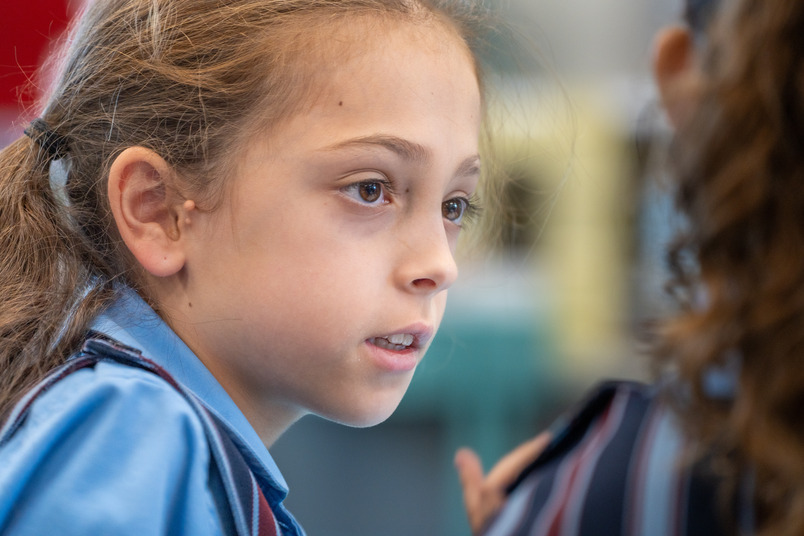Multiplication: reSolve Market
View Sequence overviewMultiplication and division are inverse operations that deal with equal-sized groups.
Related multiplication and division facts can be recorded as a fact family.
The array is a powerful representation of the relationship between multiplication and division.
Whole class
reSolve Market PowerPoint
Each group
reSolve Market picture printed on A3
Each student
Blank A3 paper
Build
Use reSolve Market PowerPoint to introduce the context of the reSolve Market.
Show students the illustration of the reSolve Market on slide 3.
We have found so much multiplication in this picture. We know now that when we find one fact, we have actually found four! That means that there are also a lot of division facts in this picture too.
Pose the activity: What fact families can you find?
Ask students to work in pairs. Provide each pair with reSolve Market picture and a blank A3 sheet of paper.
Ask students to create a poster on their A3 paper of all the multiplication that they see on their student sheet. Allow students time to represent their thinking in any way they choose.
Come together at the end of the activity and ask some students to present their posters to the class. Ask students to share the different examples of multiplication and division that they found and the fact family that they recorded for each example.
Explain: Multiplication and division are both about equal-sized groups. The two operations are related. That means that when we know one fact, we actually know four. The array powerfully represents the relationship between multiplication and division.
Add this summary statement to the class display along with students’ posters. Read the Class display professional learning embedded in this step to learn how this display can be used to build a shared understanding amongst the students.
Learning goal

The learning goal for this task is a summary of the learning through this sequence. This is a list of all the learning goals from this sequence:
- Task 1: Multiplication is about coordinating two ideas: how many groups and how much in each group.
- Task 2: The array powerfully represents the ‘how many groups’ and ‘how much in each group’ structure of multiplication.
- Task 3: The array powerfully represents the ‘how many groups’ and ‘how much in each group’ structure of multiplication.
- Task 4: Multiplying how many by how much gives the whole: how many x how much = the whole
- Task 5: Multiplying how many by how much gives the whole: how many x how much = the whole
- Task 6: Related multiplication and division facts can be found in the array. These related facts are known as a fact family.
- Task 7: Related multiplication and division facts can be found in the array. These related facts are known as a fact family.
- Task 8: Multiplication and division are inverse operations that deal with equal-sized groups. Related multiplication and division facts can be recorded as a fact family. The array powerfully represents the relationship between multiplication and division.
Look at how these learning goals develop and how new learning is gradually built on.
Discuss with colleagues: How do these learning goals develop? How could we apply this use of learning goals to design learning goals for another mathematics sequence?
The learning goal for this task is a summary of the learning through this sequence. This is a list of all the learning goals from this sequence:
- Task 1: Multiplication is about coordinating two ideas: how many groups and how much in each group.
- Task 2: The array powerfully represents the ‘how many groups’ and ‘how much in each group’ structure of multiplication.
- Task 3: The array powerfully represents the ‘how many groups’ and ‘how much in each group’ structure of multiplication.
- Task 4: Multiplying how many by how much gives the whole: how many x how much = the whole
- Task 5: Multiplying how many by how much gives the whole: how many x how much = the whole
- Task 6: Related multiplication and division facts can be found in the array. These related facts are known as a fact family.
- Task 7: Related multiplication and division facts can be found in the array. These related facts are known as a fact family.
- Task 8: Multiplication and division are inverse operations that deal with equal-sized groups. Related multiplication and division facts can be recorded as a fact family. The array powerfully represents the relationship between multiplication and division.
Look at how these learning goals develop and how new learning is gradually built on.
Discuss with colleagues: How do these learning goals develop? How could we apply this use of learning goals to design learning goals for another mathematics sequence?